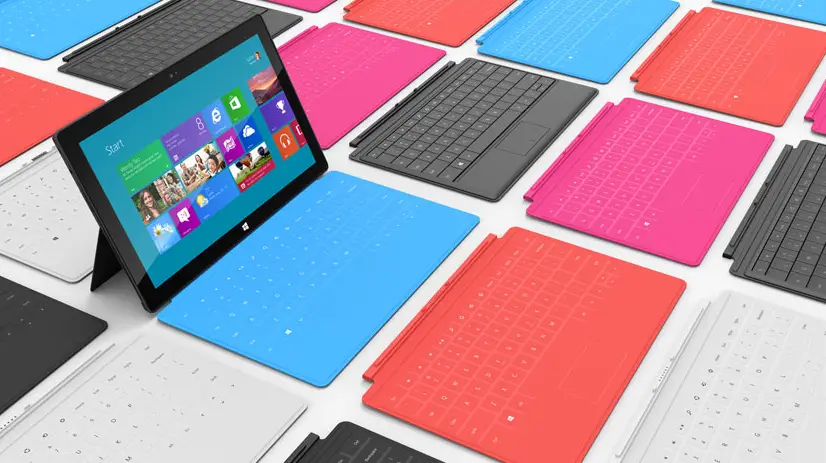Why my next computing device will be a Surface

My next computing device will be a Surface. No, I’m not talking about a hard slab upon which things are placed. Nor am I referencing Microsoft’s big old table formerly known as the Surface, which has now been stripped of its name and dubbed the “Samsung SUR40 with Microsoft Pixelsense.” I’m referring to the company’s debut line of PCs that blur the line between tablets and laptops.
Last week, I wrote about why I want a tablet directly from Microsoft, rather than a third-party hardware manufacturer. Today’s Surface announcement has only reinforced my opinion. It is obvious, even from the limited glimpses we’ve seen of the Surface, that Microsoft put a significant amount of time and effort into designing this tablet.
When my previous laptop finally died at the end of February, I thought about picking up a new one. Instead, I decided to wait it out in the hopes that the Windows 8 hardware would be significantly better than what is currently on the market. I couldn’t be more satisfied with my choice. I wanted a device that would allow me to write articles and code, yet transform into a nice entertainment consumption device when I want a break. I don’t want to read a book or use Xbox SmartGlass on a laptop, but neither do I want to surrender the power and versatility of a Windows PC for something as limiting as the tablets currently on the market. With Surface, I don’t have to choose.
Well, that’s not entirely true. I will have to make one fairly major choice, since Surface tablets come in two distinct variants. The Intel-based version of Surface is the most versatile of the two, but it’s a “traditional PC” through and through. It is fully compatible with existing desktop applications, allowing me to program and play games like Star Wars: The Old Republic. On the other hand, it requires fans to cool the machine and slightly more juice to keep everything powered on. The thin-and-light ARM-based version, however, is much more like your traditional tablet. It too has full access to the Windows Store, but most desktop applications are off-limits. That’s why Office 2013 RT comes pre-installed. But with the exception of a few games and programming environments, I’ve slowly found myself moving away from desktop applications anyway (I’ll expand upon this in Week 3 Part 3 of Living with Windows 8). For the average consumer, the choice between Intel and ARM should be a relatively easy one, and I’m almost tempted to lean toward ARM myself. Granted, I wouldn’t be able to code while on the go, but I could still do that from the comfort of my desk.
I still have a few months before I’ll need to make my final decision between the two versions. At this point, the ARM Surface is expected to be made available via the Microsoft Store around the public launch of Windows 8, which could be as early as August and as late as October. The Intel Surface, however, won’t be available for an additional 90 days. Do I want to wait that long? Should I just get both? I haven’t decided yet. But one thing is for certain: the Surface is unlike any other computing device out there. Sure, parallels could be drawn to the iPad, Android devices, existing Windows products, and even upcoming Windows 8 PCs. None of these, however, seem to have found the perfect balance between a fully functional laptop and a fantastic tablet. The Surface aims to change that.


